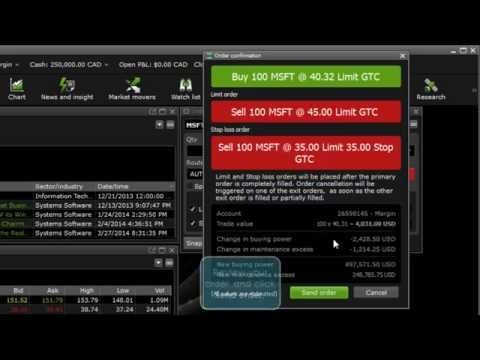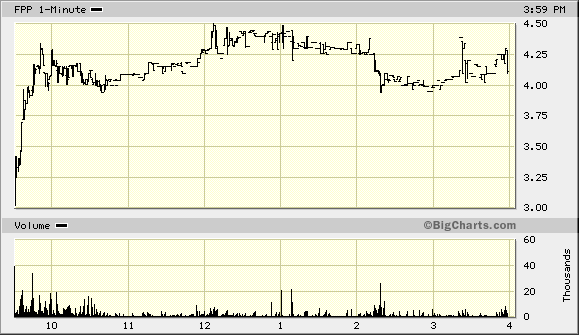What Is A Stop Loss Trailing Stop Loss Timothy Sykes
Post on: 26 Июль, 2015 No Comment

I encourage you to watch these 7 free video lessons and these 30 classic video lessons and watch several multi-millionaire traders chatting about our experiences:
Then make sure you have all the basics down like stop losses and trailing stop losses.
Once again, Investopedia brings us a great post with fantastic market information.
This one involves the trailing-stop and stop-loss. If you are sitting by your computer and watching every trade, this is slightly less necessary, but still very useful. And if you are like many people and you’re not watching your position every second, this is an especially great post to read if you want to learn to trade stocks. Investopedia gave some great examples so you can really understand the benefits of this technique.
There are various types of orders designed to protect investors from significant losses offered by online brokers. The most commonly used order is a stop loss, but another type of order should be considered: the trailing stop.
One of the most commonly used methods for limiting the amount of loss from a declining stock is to place a stop-loss order. The trader will fix the value based on the maximum loss he or she is willing to absorb. If the price falls below the stop level, the position will be closed at the current market price, which prevents any further losses.
A trailing stop and a regular stop loss appear similar as they equally provide protection of your capital should a stocks price begin to move against you, but that is where their similarities end.
The trailing stop offers a clear advantage in that it is more flexible than a fixed stop loss. It is an attractive alternative because it allows the trader to continue protecting his capital if the price drops. But as soon as the price increases, the trailing feature kicks in, allowing for an eventual protection of profit while still reducing the risk to capital.
Ok, this is getting a bit confusing, so let’s set up an example:
Consider that the trailing value is either a fixed percentage of 5% or a fixed spread of 35 cents. Either way, the trailing stop will follow the days high by the predefined amount. The important part is that once set, it cannot fall back, and if the last price drops lower than the trailing-stop value, the stop loss will be triggered.
Any time the word stop appears in an order, you know the trader is asking the broker to minimize risk to his or her trading account.
Whereas a regular stop loss has a fixed value and could be manually readjusted by the trader, the trailing stop automatically shadows the price movement, following the stocks rising price action. This type of trailing order freely allows the trader to watch over more than one open position.
Over a period of time, the trailing stop will self-adjust, moving from minimizing losses to protecting profits as the price reaches new highs.
One of the greatest features of a trailing stop is that it allows you to specify the amount you are willing to lose without limiting the amount of profit you will take. In addition, trailing stops are available for stocks, options and futures exchanges that currently support a traditional stop-loss order.
Example: The Workings of a Trailing Stop
Purchase Price = $10
Last Price at Time of Setting Trailing Stop = $10.05
Trailing Amount = 20 cents
Immediate Effective Stop Loss Value = $9.85 (10.05-.20=9.85)
If the market price climbs to $10.97, your trailing-stop value will also rise to $10.77. If the last price now drops to $10.90, your stop value will remain intact at $10.77. If the price continues to drop, this time to $10.76, it will penetrate your stop level, immediately triggering a market order. Your order would be submitted based on a last price of $10.76. Assuming that the bid price was $10.75 at the time, the position would be closed at this point and price. The net gain would be 75 cents per share less commissions.
During a temporary price dip, its important that you dont reset your trailing stop. If you do, your effective stop loss may end up lower than what you had bargained for. By the same token, reining in a trailing-stop loss is advisable when you see momentum peaking in the charts, especially when the stock is hitting a new high.
Take another look at the sample stock above. When the last price hits $10.80, an alert trader will tighten his trailing stop from 20 cents to 11 cents. This allows for some flexibility in the stocks price movement while ensuring that the stop is triggered before a substantial pullback can occur.
Now this is where we see that even active traders like Tim can use this information to their advantage. A good active trader always maintains the option to close a position at any time by submitting a sell order at market. Just be sure to cancel any trailing stops you have set, or you could find yourself in a short trade. And yes, trailing stops work equally well on short positions.
So, can you use both of these types of orders?
Yes, you can use both, but it is important to note that initially the trailing stop should be deeper than your regular stop loss. Its also important for the trader to always calculate maximum risk tolerance for his or her portfolio and then set the main stop loss accordingly.
An example of this concept is to have a stop loss set at 2% and the trailing stop at 2.5%. As the price increases, the trailing stop will surpass the fixed stop loss, making it redundant or obsolete. Any further price increases will mean further minimizing potential losses with each upward price tick. Initially, the stock was given some flexibility with the staggered values, so it could establish a level of support. By doing this, you can trail a stocks price movements without getting stopped early in the game, and allow for some price fluctuation as the stock finds support and momentum. Be sure to cancel your original stop loss when the trailing stop surpasses it.
The added protection here is that the trailing stop will only move up. During market hours, the trailing feature will consistently recalculate the stops trigger point. Basically, if the price doesnt change, then neither will the value of the stop.

It is a little trickier to use a trailing stop because of price fluctuations and the volatility of certain stocks, especially during the first hour of the day. Of course, these fast-moving stocks are the ones that will generate the most money in the shortest time period and are usually the ones that active traders love to play.
Example:
Purchase price = $90.13
Number of shares = 600
Stop Loss = $89.70
First Trailing Stop = 49 cents
Second Trailing Stop = 40 cents
Third Trailing Stop = 25 cents
The stock was in a steady uptrend as determined by strong lines in the moving averages. Keep in mind that all stocks seem to experience resistance at a price ending in .00 and also at .50, although not as strongly. Its as if traders are reluctant to take it to the next dollar level.
Let’s say our example stock was purchased at $90.13 with a stop loss at $89.70 and initial trailing stop of 45 cents. When the last price reached $90.21, the stop loss was canceled as the trailing stop took over. As the last price reached $90.54, the trailing stop was tightened to 40 cents with the intent of securing a breakeven in a worst-case scenario.
As the price pushed steadily toward $92, it was time to tighten the stop. When the last price reached $91.97, the trailing stop was tightened to 25 cents from 40 cents. The price dipped to $91.48 on small profit-taking, and all shares were sold at an average price of $91.70. The net profit after commissions: $942, or 1.74%.
To make this work on active trades, set a trail value that will accommodate the normal price fluctuations for your particular stock and catch only the true pullback in price. This means studying a stock for a day or two before actively trading it.
I have written many times before that emotions are one of the biggest obstacles in trading. An added benefit of the trailing stop loss and the stop loss is that it takes away much of that obstacle. Just dont second-guess yourself.
So, even though a few risks are involved with using trailing stops, its important to remember that by combining them with a stop loss, they can protect your portfolio value. This is exactly what you want, and what all the Profitly gurus talk about quite frequently. Theres no way you can go broke locking down your profit.














